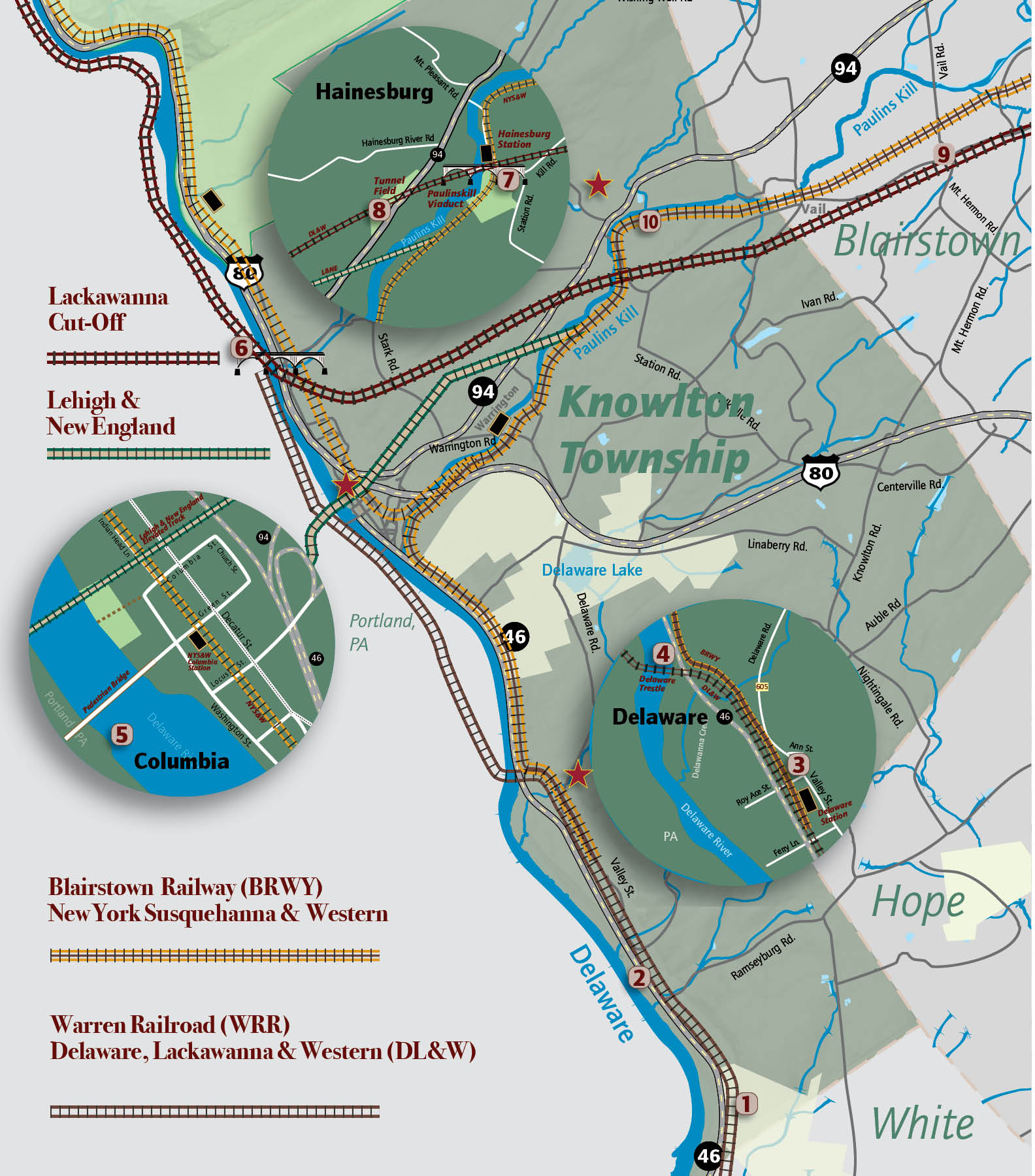
Built in 1856, the Warren Railroad served as the main line of the Delaware, Lackawanna, and Western until the completion of Lackawanna Cut-Off in 1911. The line was abandoned in 1970.
Opened in 1877 from a connection to the Warren Railroad in Delaware to Blairstown, the Blairstown Railway became part of the NYS&W, connecting east to Jersey City and west to Stroudsburg. The line was abandoned from Columbia north in 1941, and east to Sparta in 1962.
The L&NE ran from the Lehigh Valley to Maybrook, NY extending through Knowlton in 1886, using trackage rights on the NYS&W from Hainesburg Junction to Swartswood. The railroad was abandoned in October, 1961.
Constructed by the DL&W and opened in 1911, the Cut-Off was the last mainline built in New Jersey. Considered by many to be the most scenic rail line in the state, it replaced the “Old Road”, which was 11 miles longer.
The Warren Railroad (WRR) was the first to lay track in Knowlton Township when, in 1856, John I. Blair completed its link to the Delaware, Lackawanna, and Western Railroad (DL&W) and the lucrative eastern markets for coal and iron products from Pennsylvania.
As the railway came north through Washington and Oxford, then turned west along its final stretch, the tracks found their way across the Beaver Brook, then through the 900 foot-long Manunka Chunk Tunnels. A junction and station were erected at the tunnel’s exit, and the WRR continued along the ridge roughly parallel and north of what is now State Route 46, towards its junction with the DL&W.
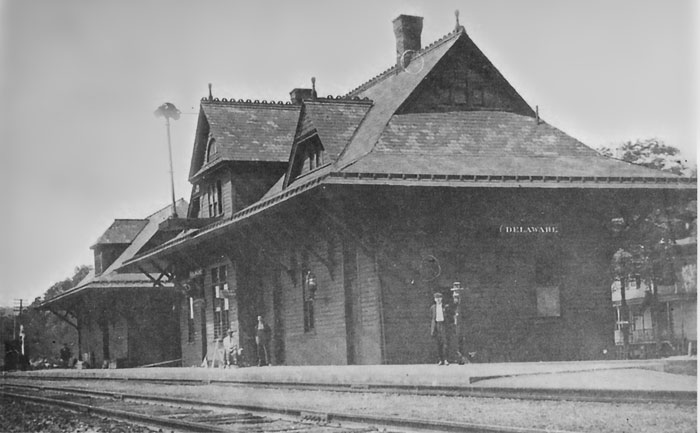
Just before the Warren Railroad made its Delaware River crossing into Pennsylvania, Blair built one more station, this time conceiving an entire town that would originate and mature in tandem with the commerce his railroad would bring, the village of Delaware.
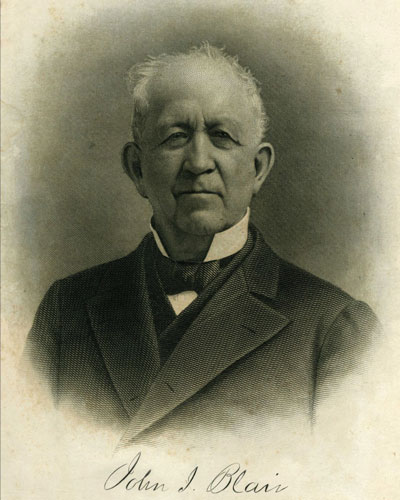
Blair continued to involve himself in railroad development when he opened the Blairstown Railway (BRWY) in his own backyard in 1877. The name most commonly associated with the Blairstown Railway is the “Dinkey”, the line’s short train usually made up of a small steam locomotive pulling one or two cars moving freight and passengers from its Blairstown station past a stop at Kalarama, the depots at Vail and Hainesburg past the former hamlet of Warrington and Columbia Junction to its terminus at Delaware Station, a total distance of twelve miles. There, freight and riders could transfer to DL&W trains heading eastward into New York or to destinations westward.
In the early 1880s, the Blairstown Railway became part of the main line of the New York, Susquehanna & Western Railroad, (NYS&W) as it extended from Jersey City through Blairstown and Hainesburg, then north from Columbia Junction along the Delaware River towards the Water Gap and westerly to the Pennsylvania coal fields. In 1886, the Lehigh and New England Railroad (L&NE) crossed the Delaware from Allentown, PA at Portland, then through Columbia to Hainesburg where it too joined the former BRWY route to Blairstown, then northeast through Swartswood towards Maybrook NY.
Because the tunnel at Manunka Chunk flooded frequently and was too narrow for some of the larger engines of the day, the DL&W began to plan the new route that was to become the Lackawanna Cut-Off, a line that altered the contour of both the landscape and culture of Northwestern New Jersey and has been a source of wonder since the first shovels hit the ground. Opened in 1911, the last mainline to be built in New Jersey ran from Port Morris to the Delaware Water Gap across some of the world’s largest rail embankments and two massive concrete viaducts, both of which were constructed in Knowlton. Abandoned in 1979, there are plans for the restoration of rail service along the Cut-Off to Scranton PA.
Hainesburg
The Blairstown Railway station built along the Paulins Kill near the Hainesburg tannery and grist mill proved to be only a mild stimulus to the local agricultural community established in the early nineteenth century. The railroad hustle and bustle was only beginning however, as the NYS&W and L&NE railroads adopted the route on their way to far-away cosmopolitan destinations. And by 1911, the landscape had been conquered by the Paulins Kill viaduct and the new road for the mighty Delaware, Lackawanna and Western.
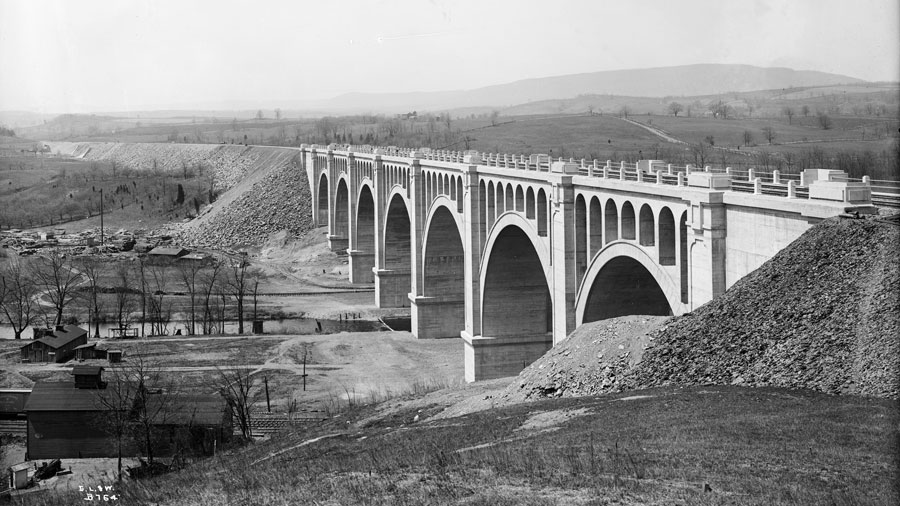
Columbia
West from Hainesburg, the NYS&W forked at Columbia Junction and turned north, establishing a station on Green Street in the village of Columbia in 1881, a stone’s throw from the covered bridge over the Delaware constructed a dozen years prior. In 1886, the L&NE came across the river on another bridge and through town — or rather over — on an elevated track, heading east towards its own junction with the NYS&W near Hainesburg. Along with the railroad depot, the village contained a church, two stores, post office, hotel, saw mill, and a school. The NYS&W continued on tracks now covered by roads built over some sections, including Indian Head Lane and Susquehanna Lane, along the Delaware to Howey’s Station then Dunnfield before crossing just beyond the Water Gap. The Columbia Station was dismantled in 1938, and the L&NE tracks removed in 1966.
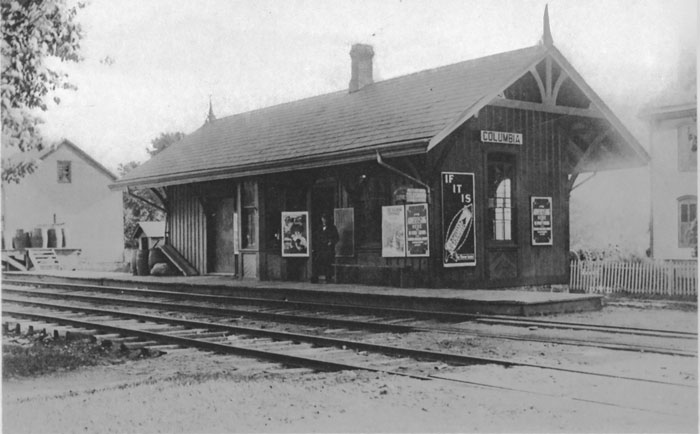
Delaware
The Warren Railroad’s last stop before crossing the Delaware River sprouted quickly into the village of Delaware Station, (later Delaware) with a hotel and general store, creamery, wood-working factories and a wagon manufacturer. Scant evidence of the village’s railroad years remains in the sunken pit of a turntable, an occasional visible bit of railroad tie, well-worn bridge abutments, and the intermittently discernible rail bed through the village, following a bit of road out of town known as Old Route 46. But, although the station and hotel are gone, today’s Delaware Historic District, listed on the National Register of Historic Places in 2003, consists largely of buildings erected in that era, mostly unaltered and retaining the flavor of that time.
1.Manunka Chunk Tunnel & Station. The abandoned tunnel entrance looms along the ridge above Route 46 as the highway enters Knowlton from White Township.
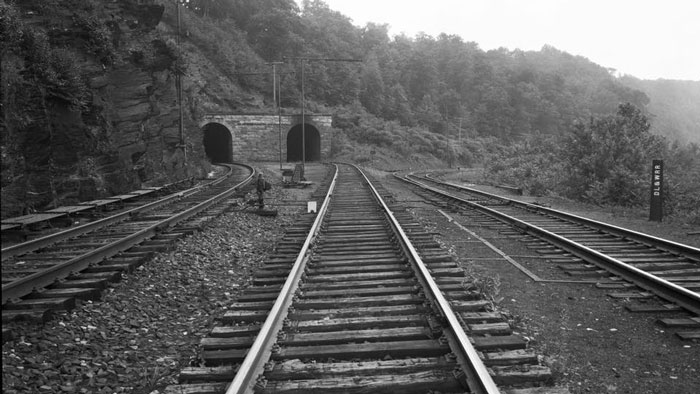
2. Ramsaysburg Tavern. The tavern at the Ramsaysburg Homestead dates to 1795 but was moved to its current location in 1855 to make way for the Warren Railroad. A residential addition completed the building’s current form.
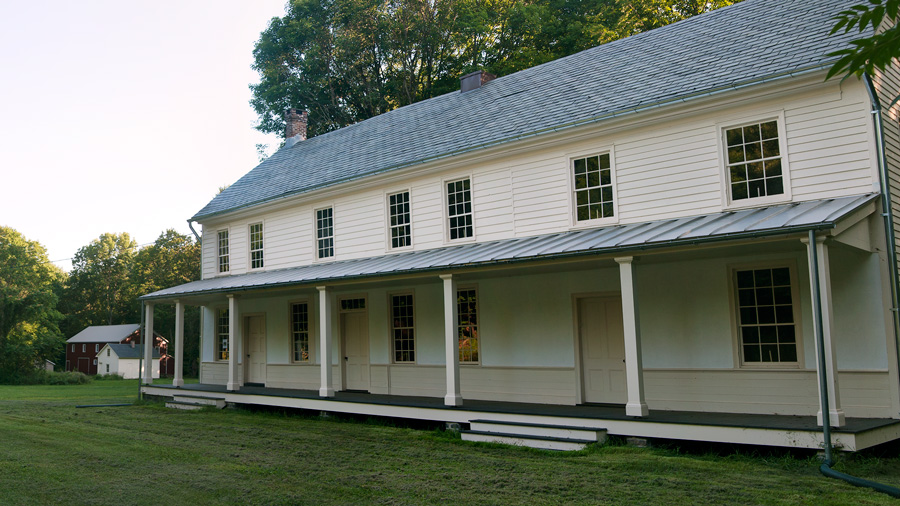
3. Delaware Post Office. The post office has occupied its current location since 1884 without interruption, making it the oldest in New Jersey still operating in its original building, the brick general store erected by John Blair in 1860.
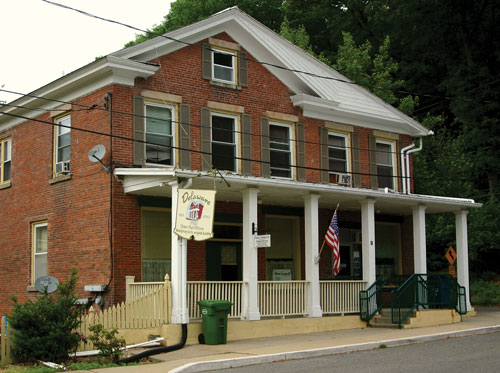
4. Delaware Trestle Bridge. Built in 1902, the now-abandoned bridge was the fourth to service the Warren Railroad out of Delaware station along the Lackawanna old road since 1856. So as not to interrupt service, it was constructed just upstream from its predecessor which was then converted for vehicular traffic, owned and operated by a preacher named Darlington.
5. LNE Elevated Track and Bridge Piers. Two imposing concrete abutments at the river’s edge are the remains of the L&NE bridge across the Delaware that linked the elevated track through Columbia to a station in Portland, PA, that still stands.
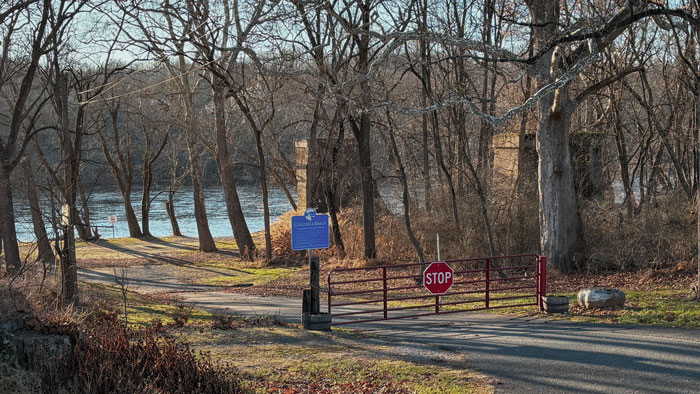
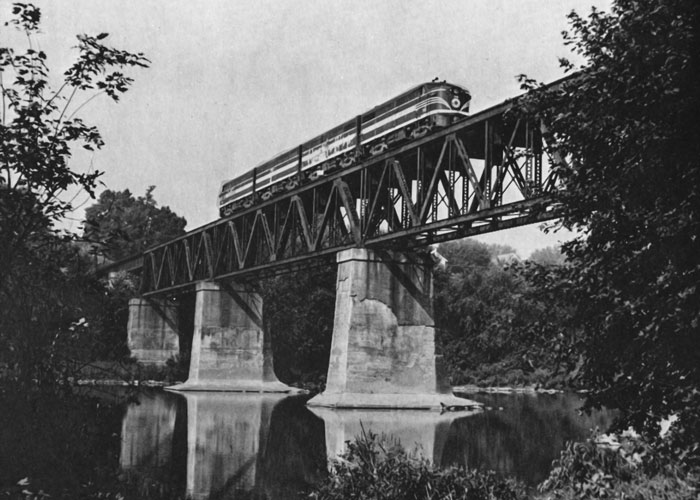
6. Delaware River Viaduct. The largest reinforced concrete structure in the world when it was completed in 1910, the bridge, which is 64 feet tall and 1,450 feet long, crosses over Interstate 80, then the Delaware River into Pennsylvania.
7. Paulins Kill Viaduct. Due to its breathtaking height of 117 feet, the bridge is the signature structure along the Lackawanna Cut-Off. Although it has less reinforced concrete than its sister bridge over the Delaware, at 1,100 feet in length its seven graceful Beaux Arts arches are still impressive.
8. Tunnel Field. The present-day tunnel through which Route 94 passes under the Lackawanna Cut-Off lies adjacent to another that spans Knowlton’s recreational area. The field tunnel was intended for proposed Lehigh and New England trackage that was never built.
9. Molasses Junction. Named for the farm that sat beside the 100-foot-tall Vail Fill (Blairstown) on the Cut-Off, the “junction” still has a stone house that may have been employed as a railroad office, although the adjacent hotel, which was used to house construction workers for the Cut-Off, is long gone.

10. Paulins Kill Valley Trail. The original a right-of-way for the NYS&W has been reclaimed for use as a recreational trail that leads 27 miles through Knowlton to Warbasse Junction in Newton. Bridges, foundations, telegraph poles and mileposts with railroad hieroglyphics like JC 42 (42 miles to Jersey City) are among the visible relics along the way.
Local roots!
Choose and Cut from 10,000 trees! Blue Spruce, Norway Spruce, White Pine, Scotch Pine Fraser Fir, Canaan fir, Douglas Fir. Family run on preserved farmland. Open Nov 29 - Dec 23, Tues-Sunday, 9-4. Easy Access from Routes 78 or 80.
Consider Rutherfurd Hall as refuge and sanctuary in similar ways now, as it served a distinguished family a hundred years ago.
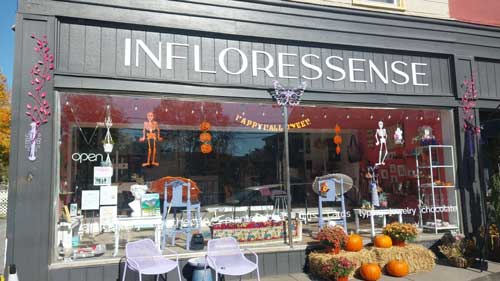
A fine art gallery like no other! Unique, handmade gifts and cards as well as yoga, meditation, and continued learning lectures. Come in Saturdays for all-day open mic and Sundays to try unique nootropic chocolate or mushroom coffee. Browse the $5 books in the Believe Book Nook while you nibble and sip.
Millbrook Village, part of the Delaware Water Gap National Recreation Area, is a re-created community of the 1800s where aspects of pioneer life are exhibited and occasionally demonstrated by skilled and dedicated docents throughout the village